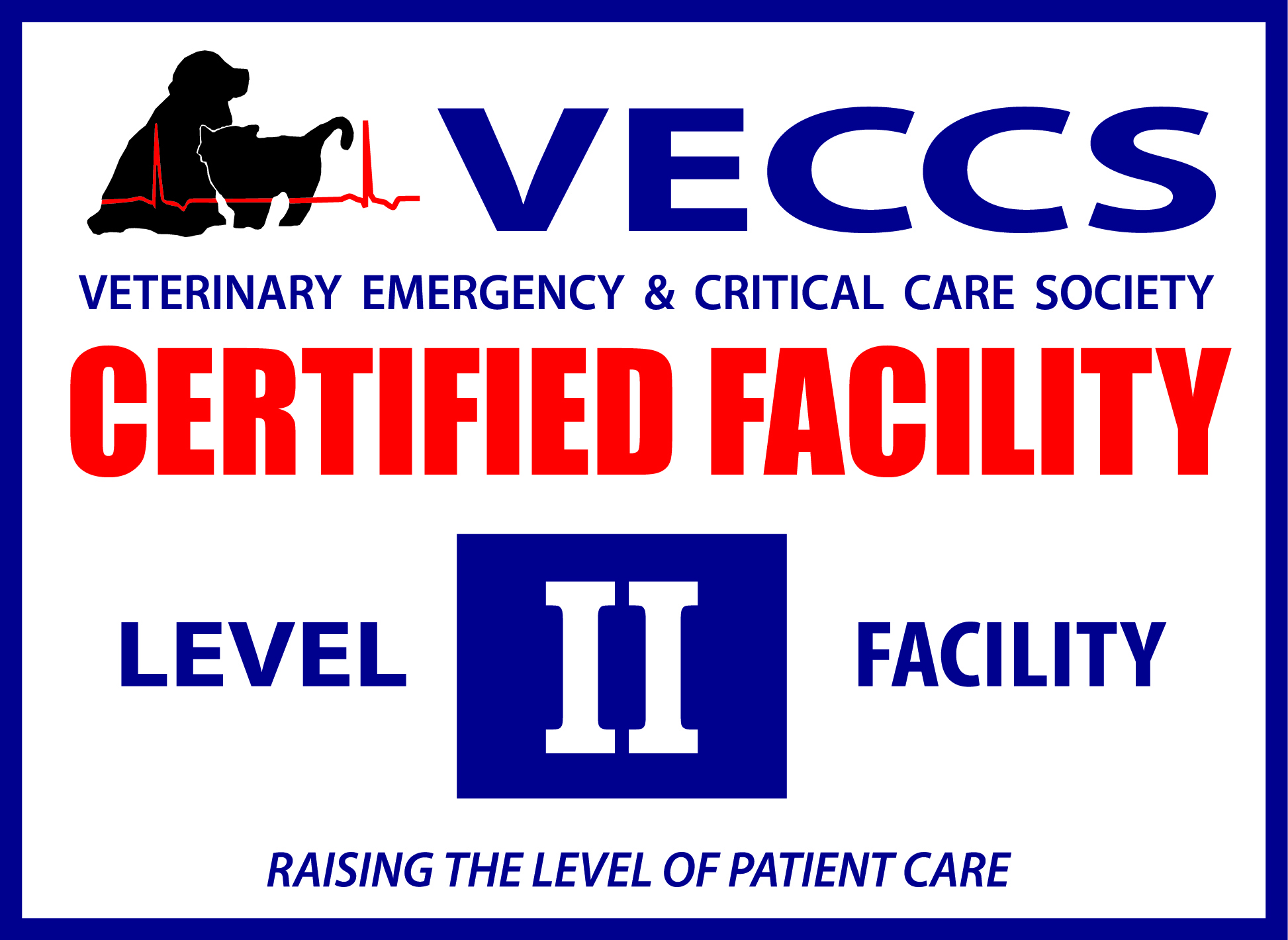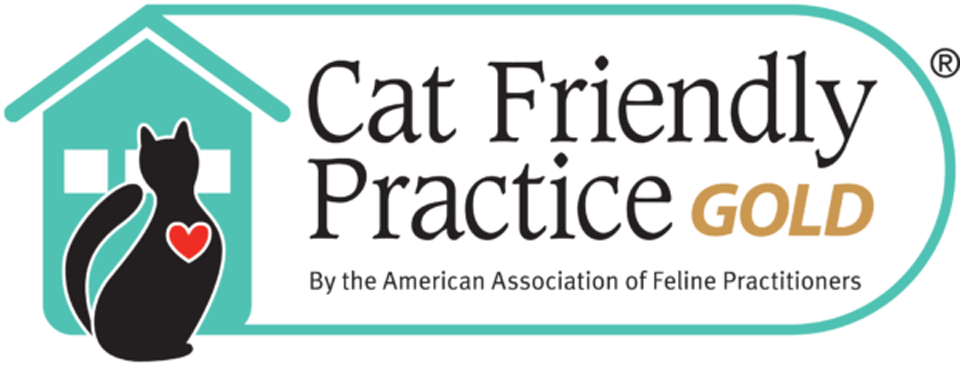Today, more people in the United States own pets of various kinds than have children; 99% of these owners consider their pet to be a full-fledged member of their family. Any veterinarian who practices companion animal medicine and surgery must learn to cope with owner bereavement and grief over the death—or anticipated death—of a beloved pet.

Largely because of euthanasia, it is estimated that veterinarians will experience the loss of a patient five times more frequently than will a physician. Inevitably, also, anyone who acquires a pet as a puppy or kitten must eventually face its aging and death at some point. An owner’s reaction is often particularly severe when the pet is diagnosed with a malignant disease for which there is no effective treatment. This emotional response can range from completely acceptable “normal” grief to a pathological state requiring the assistance of a psychologist, psychiatrist, or other counselor. Why are we so dependent today on their pets? And why is the process of grieving the loss of a pet perhaps more difficult now than in the past? Certain conditions of modern life have led to marked alterations in traditional psychological support systems, thus contributing to the increased closeness of owners and their pets:
The loss of the extended family unit. Today we are a mobile society, often with the closest of relatives scattered over the entire country. The traditional support network of parents, grandparents, sisters, brothers, and children has thus been rendered ineffective. Since man has a distinct psychological need for a “family” of some type, the pet often fulfills the role of a human substitute. Occasionally the pet is the person’s closest social companion and entire support system. This is most often seen with elderly people. In the bygone days of the extended family living either under one roof or in a small town, the older person had many family members to depend on for social relationships; today, however, his or her children may live thousands of miles away and visit once a year. Daily psychological needs of the elderly for companionship are fulfilled by the ever-present dog or cat.

The rarity of bereavement as a social situation in a person’s lifetime. Most people have little contact with severe illness or death and few opportunities to be legitimately bereaved. Often, elderly relatives live far away and are visited infrequently; when they become severely ill or die, their family’s grief is transient, since their death does not make any difference in day-to-day, here-and-now life. So, for most people, bereavement is a stressful situation for which they have little past experience. The death of a pet is likely to be the first emotional loss of its type that many young and middle-aged adults have had. Certainly many children experience the death or loss of a pet as the first such experience they have encountered.
The lack of social acceptance for grief expressed over the death of an animal. Modern society offers at least a modicum of social sanction and ritualized support to the person who has experienced the death of a close human family member. Outward expressions of grief are expected, even encouraged, and the funeral brings together family members to help the grieving individual cope. There is no such acceptance of grief over the death of a pet. The grieving person is looked upon as weak or “silly” if he or she grieves excessively. An overt display of grief over the loss of a pet may be embarrassing both to the bereaved individual and to others who witness it. After all, as people often say, it was “just a dog.” Burial of a pet and pet funerals are regarded as childish or maudlin. For these reasons many pets are euthanized and disposed of without the owner ever seeing the body or having any expressions of sympathy from friends, coworkers, or family.
Stages of Grief

The response of family members and the veterinarian’s response during the bereavement process can make a tremendous difference in the way the owner copes with grief over the loss of a pet. If the process of human acceptance of death is understood—by all concerned, including the owner—emotional outbursts can be dealt with more effectively when they occur. Elisabeth Kubler-Ross in her classic treatise On Death and Dying examined the stages of the grief process that the dying human experiences, and found the same stages reflected in the family members of the dying individual. Since the dog or cat is often regarded as a human substitute, it should not surprise us to see similar stages of grief in an owner dealing with the announcement of a pet’s terminal illness.
Denial of the truth of the veterinarian’s grave prognosis may be the first protective response of the owner, who may insist that his or her pet’s biopsy was misread or that the pathology laboratory sent the wrong report. The animal’s eating, drinking, and otherwise normal behavior may be invoked as evidence that a terminal disease cannot be at hand. Such owners may “shop around” from veterinarian to veterinarian in the vain hope that someone will tell them that the wrong diagnosis has been made. A veterinarian’s best response to an owner’s denial of the truth is to accept the possibility that a wrong diagnosis may have been made, or that the possibility for cure might exist.

This is necessary sometimes even when the doctor feels that the situation is hopeless. A veterinarian may have to re-biopsy the lesion, call the pathology laboratory to request the block of tissue for a second opinion, or refer the patient to a specialist, even if the diagnosis is obviously correct. Often, the specialist will tell the owner exactly—sometimes even in the same words—what has been said by the owner’s family veterinarian. If told of the incurability of a condition such as cancer, some owners will continue their denial by placing the animal on vitamins, special diets, or even various unproven medications, expressing great faith that the pet will improve on these ineffective regimens. Finally, however, the owner will generally face the truth of the situation, sometimes only by seeing the pet’s deterioration.
The likelihood of denial as an owner reaction is usually greater if the dog or cat’s condition is acute. If the animal has been failing over a period of months, the owner possibly expects to hear bad news and is emotionally braced for it. The most extreme denial reactions are seen when the owner has no expectancy at all that the pet is ill or when the animal’s death is unexpected. Unexpected death by trauma or during an elective surgical procedure may provoke shock and disbelief in the owner, who experiences a stunned numbness. In some people, the shock and disbelief lasts for only a matter of hours, but for others the reaction may last for several days. The shock of acute bereavement is often described as a “cotton wool” time in which, as C. S. Lewis writes in A Grief Observed, one “feels mildly drunk or concussed.” The range of reaction may run from verbal denial to complete incapacitation.

Anger is a grief reaction commonly seen as a reaction to the news of a terminal illness in a pet. If handled inappropriately, this is also the phase which may be the most destructive to an owner-veterinarian relationship—or to family relationships. This anger may be displaced in any—or all—of five directions:
- At the veterinarian for being the one who delivered the bad news. The owner, through an irrational reasoning process, may act as though it is the veterinarian’s fault that the animal is dying. If the owner has a long relationship with his or her veterinarian, he may furiously demand to know why the diagnosis was not made sooner, in time to treat the disease. A veterinarian must be careful at this stage not to take the expression of anger personally. This is temporary, and is associated with the owner’s acute reaction to grief.
- At the pet itself. A pet may be blamed for imminent desertion of the owner, causing the owner or members of the owner’s family to reject the animal completely, refusing to pet it or play with it ever again.
- Towards other family members. This is seen often with children. Since it is difficult for a child to understand why parents cannot afford to treat an animal with an expensive medical or surgical regimen, the child will sometimes blame his parents for years for “killing my dog.” It is for this reason that it is best that a veterinarian not present options for treatment to an owner in the presence of small children. It is best that the parents hear the options alone; they must be allowed to choose euthanasia, if this is the only economical alternative, without the added stress and guilt imposed by young family members.
- At God. Even if—sometimes especially if—an owner is religious, there is a tendency to blame God for an animal’s illness or death. The owner often says, “Why did this have to happen to me? Such awful things don’t happen to other people who don’t even care for their pets!”
- Against the owner himself or herself in the form of guilt. “If I had only come in sooner. . .” “We never should have had this surgery done in the first place.” These are thoughts that may go through an owner’s mind when a terminal condition has been diagnosed or a pet dies suddenly. Sometimes an owner will search for ways in which he or his family may have contributed to the pet’s condition, such as cigarette smoking. These are often totally unjustified. An owner may also feel guilty that financial resources are being diverted from the rest of the family for the care of the pet.

It is apparent to most workers in the field of death and dying in humans that guilt is always present whether it is deserved or not. If possible, family members and friends must try to help the owner to stop this self-recrimination. The owner must be assured, sometimes over and over, that the disease is not anyone’s “fault.” The owner must not be made to feel guilty if he selects euthanasia rather than treatment of the disease. Of course, in some instances, the owner is obviously and incontrovertibly at fault, as in the case of the person who runs over his own cat with his car in his driveway. These owners must be supported as well as possible with expressions of sympathy, but will often take weeks or months to come to grips with their guilt.
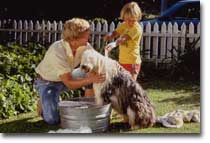
Grief – At some point in the bereavement-acceptance process, the owner will experience overt grief over his or her impending loss. This grief may take on extreme forms, sometimes to the point of threats of suicide if the pet dies. In general, however, the owner will ultimately accept the inevitability of the animal’s impending death, and move on to resolution. The veterinarian may help by enlisting the owner’s aid in caring for the animal and explaining the signs of pain and discomfort the animal will experience as the end approaches. Occasionally, an owner will not accept euthanasia as an alternative to natural death. This can be a difficult situation for a veterinarian or other family members, who are forced to watch an animal suffer when there is little that can be done to help it. In this instance, it may be gently pointed out to the owner that the animal is in intractable pain and cannot recover. It may be suggested that the kindest last thing that can be done for the pet as a friend is to relieve the pain and let the pet die with dignity. Occasionally, a veterinarian must even send a hospitalized animal home for a few days to allow an owner to realize the real plight of the animal.
Resolution – The final stage of the bereavement process is resolution. This stage is a kind of “positive submission,” according to Dr. Kubler-Ross, an “acceptance of what you can’t change with a sense of peace and serenity.” The owner is often emotionally drained, and will be ready for euthanasia or death when the time comes. If the owner reaches this phase before the pet dies, grieving has been completed and the ultimate death of the animal will usually be accepted with equanimity.
It is important to realize that the order, duration, and extent of the stages of grief vary greatly. Many owners will skip entire stages of this process, often suppressing their overt expressions of anger or grief. Some people will outwardly seem to accept the situation, but a new outpouring of grief may be seen when the animal dies.
Degree of Grief Response
There is a wide range of behavior that can be classified as normal. For some, grief is overpowering, for others it is mild; for some, it begins at the time of death, while for others it takes longer to begin to grieve. Factors that may intensify the degree of grief response an owner shows are:

Nature of the attachment: The most intense and difficult responses occur when the attachment between the owner and the pet was very strong; where the pet was needed to support the owner’s sense of self-worth and of being “needed”; or where the owner was highly dependent on the pet, such as if there was little other social contact for the owner. Here are some situations in which the owner will feel a particularly strong attachment:
- when the owner believes that he or she rescued the dog from potential or certain death—as with adoption of a stray animal in poor condition;
- when the owner feels that the animal has saved his or her life—-either in a “guarding” or “warning” mode (i.e., warning the owner of a fire in the home), or helped the owner get through a severe emotional “rough spot” in life (i.e., death of a loved human);
- when the owner has relied on the animal nearly entirely for emotional or financial support (such as a highly trained working dog or horse);
- when the owner has “grown up” with the animal from childhood, and can’t remember life without the pet;
- when the owner views the animal as a symbolic link to a lost human relationship and the memories that relationship held—a marriage in which the partner has died or a divorce has occurred, a child that has died or moved far away, etc.;
- when the owner anthropomorphizes the pet to the point that he or she actually cannot differentiate the pet from a human.
All of these situations may accentuate the grief response, and make it more difficult for the owner to reach resolution.

- Mode of death: A sudden death is more difficult to grieve, especially if the owner is geographically distant from the pet at the time of death.
- Painful death: A death that is painful for the animal (i.e., the animal suffers) is often grieved more intensely because of later guilt of the owner for “putting him through it”—especially if there has been surgery, radiation therapy, or chemotherapy that has caused the pet some discomfort.
- Historical antecedents: How did the owner handle previous losses, and how well were they resolved? Is there a history of clinical depression that might make this grief experience less well tolerated?
- Personality variables: Age, sex, tolerance for pain and anxiety, and ability or inability to express feelings openly are variables that will help to determine how an owner deals with a grief experience.
- Social factors: Support from family and friends and an owner’s religious beliefs will often help to assuage extreme grief after a pet has died.
There are several signs of complicated bereavement that may signal the need for professional help. Chronic grief, or grief that shows no signs of resolution, may suggest that counseling is needed. This grief may be linked to an earlier loss of a human relationship that was insufficiently mourned. In exaggerated grief, a grief response is so profoundly experienced that the owner is dysfunctional. Sometimes, grief that was absent at the time of the animal’s death may later appear under the guise of a psychiatric or medical symptom. If a family member recognizes these signs of severe and unremitting grief, professional help must be sought. Today, many psychologists and psychiatrists have experience dealing with pet loss and will be able to provide needed advice or counsel.
Tasks of Mourning
For an owner, mourning may not seem to involve clear-cut stages. It may help an owner to regard the process of mourning as involving a series of certain tasks that need to be accomplished. The “task” approach provides a way for the owner to understand the process, but also provides a focus for the types of interventions one might make to facilitate a person through the process.
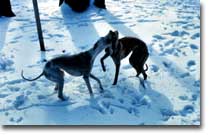
It offers a way to understand what is happening in the case of complicated bereavement. Finally, it offers family members and loved ones something to do for the owner that can help reduce feelings of helplessness when we can’t do what they want us to do—namely, give their pet back.
- Accept the reality of the loss – There is a certain sense of unreality when news of a pet’s death occurs, especially in the case of a sudden death. The owner may experience searching behavior looking for the lost loved dog or misidentify dogs on the street and have to remind themselves that the dog is dead and will not return. Denial can range from delusional hope that the dog is only away and one day will return to an actual belief, irrational though it may be, that the pet is still alive.
- Experience the pain of the loss – Some owners stop feeling and deny that the pain is present; others cut short the pain by saying, “He was not actually very important to me.” If the pain is not felt, it may present later as a physical symptom or as some other form of aberrant behavior.
- Adjust to the environment from which the dead pet is missing – It may take a long time for the owner to realize exactly what has been lost—a playmate, protection, a bed-warmer, etc. This growing awareness of loss is one reason that bereavement can be a lengthy process. Awareness of loss continues to come to the fore months after a death. Some people withdraw from the world, assume a helpless posture, and refuse to face up to environmental requirements—they remain in a state of suspended growth.
- Withdraw emotional energy from the dead pet and reinvest that energy in other relationships and activities – Freud said, “Mourning has a quite precise psychical task to perform: its function is to detach the survivors’ memories and hopes from the dead.” Many owners have difficulty with this because they fear that they will dishonor the memory of the dead pet if they obtain another animal. Some carry a picture of the dead animal as a constant reminder, because they are afraid they will lose the memory of it. Still others fear a new relationship with a beloved pet because it too might end in a loss—so they refuse to love another animal. Some people find loss so painful that they make a pact with themselves never to love again—animals or humans. Such a person’s emotional life stops at the point the loss occurred.
The Role of Family Members and the Owner’s Veterinarian
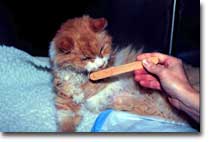
During the process of bereavement over the loss of a pet, family members and the owner’s veterinarian can give tremendously important psychological support, which may make the difference in the owner’s ability to continue in his normal day-to-day life. Often, the veterinarian’s kindness and humane treatment of a pet will make a lasting impression on the owner. This impression may extend beyond the owner’s personal veterinarian to veterinary medicine in general. What the veterinarian and family members can do is legitimize the owner’s grief. In standing by the pet in both life and death, the owner’s friends render an indispensable psychological service. Here are some steps that can be taken to help someone who is experiencing grief over the impending loss of death of a pet:
First, recognize that grieving can occur before a death, and that this is completely normal. This should be discussed frankly with the owner. Encourage family communication before the animal’s death. It is often helpful if the owner is able to be with the animal as it is dying and allow him or her to be with the body after the death. This helps with the first task of accepting the reality of the pet’s death.
After the death, encourage conversation about the dead pet, reminiscing about previous experiences and events in the pet’s life. This is one of the most helpful outcomes of the funeral experience for human beings, since it makes the bereaved realize that others cared for their lost loved one as well. Just a little time talking with friends and family members about remembrances of a pet is extremely helpful for an owner dealing with grief. Let the owner know that feelings such as denial, anger, guilt, and anxiety are completely normal; offer reassurance if the owner feels that he or she is “going crazy.”
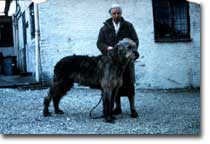
People seldom decompensate or become mentally ill following the loss of a pet—but they may feel that they are temporarily going crazy because of the unfamiliarity of the experience. Recognize the signs of complicated bereavement, and if these occur suggest that a professional who deals with grief therapy may be able to help. All of these steps will assist the owner to make an easier transition to resolution of their grief, and will be greatly appreciated by the owner—even if he or she is not able to verbalize gratitude at the time.


